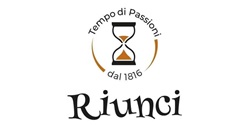DUBLIN – The global white wine market is poised for steady growth despite geopolitical challenges. It is projected to rise from $37.71 billion in 2022 to $39.72 billion in 2023, translating to a compound annual growth rate (CAGR) of 5.3%. With this trajectory, the market is expected to reach a value of $47.99 billion in 2027 at a CAGR of 4.8%.
However, the Russia-Ukraine conflict has presented uncertainties in global economic recovery after the COVID-19 pandemic. This situation has escalated to economic sanctions, commodity price surges, and supply chain disruptions, leading to inflation across various sectors, including the global white wine market.
White Wine Global Market Report 2023 from researchandmarkets.com provides a comprehensive analysis of this industry. It presents key market statistics, including global market size, regional shares, competitor analysis, market segmentation, and the latest trends and opportunities that can help stakeholders navigate this challenging yet exciting landscape.
Market Dynamics and Innovations
Product innovation has emerged as a driving force in the white wine market. Major companies are intensifying their R&D efforts to create unique offerings and fortify their market position. Oddbird Winery, a Sweden-based company, launched the world’s first alcohol-free natural wine, Intervention Organic White No. 1, in May 2021. The product’s unique flavor profile, coupled with a 100% organic and environmentally friendly cultivation process, exemplifies this innovative trend in the market.
On the other hand, mergers and acquisitions have been a prominent strategic move among industry leaders. In January 2021, E. & J. Gallo Winery acquired Constellation Brands, Inc. for $810 million, securing over 30 wine brands and five wineries to boost its future wine production and market share.
Regional Overview and Consumption Trends
In 2022, Europe took the lead in the global white wine market. However, the market report covers a broad spectrum of regions, including Asia-Pacific, Western Europe, Eastern Europe, North America, South America, the Middle East, and Africa. The study also explores key countries such as Australia, Brazil, China, France, Germany, India, Indonesia, Japan, Russia, South Korea, the UK, and the USA.
The rising consumption of wine is propelling the white wine market’s growth. In the USA alone, wine consumption surged by 10% from 2019 to 2021, according to the Wine Institute. This trend is attributed to various factors, such as evolving taste preferences, health consciousness, and digital influences.
In conclusion, the global white wine market presents a dynamic and fast-evolving landscape. Despite geopolitical tensions and economic disruptions, the industry remains resilient, propelled by product innovations, strategic market movements, and rising global consumption. The market is anticipated to demonstrate promising growth in the coming years, offering exciting opportunities for existing and aspiring market players.










